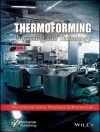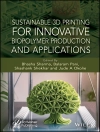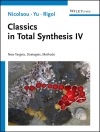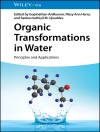Monomers composed of carbon and hydrogen atoms are the simple building blocks that make up polyolefins — molecules which are extremely
useful and which have an extraordinary range of properties and applications. How these monomer molecules are connected in the polymer chain defines the molecular architecture of polyolefins.
Written by two world-renowned authors pooling their experience from industry and academia, this book adopts a unique engineering approach
using elegant mathematical modeling techniques to relate polymerization conditions, reactor and catalyst type to polyolefin properties.
Readers thus learn how to design and optimize polymerization conditions to produce polyolefins with a given microstructure, and how different
types of reactors and processes are used to create the different products.
Aimed at polymer chemists, plastics technologists, process engineers, the plastics industry, chemical engineers, materials scientists, and company libraries.
Содержание
Acknowledgmentsxi
Preface xiii
Nomenclature xvii
1 Introduction to Polyolefins 1
1.1 Introduction 1
1.2 Polyethylene Resins 4
1.3 Polypropylene Resins 10
Further Reading 13
2 Polyolefin Microstructural Characterization 15
2.1 Introduction 15
2.2 Molecular Weight Distribution 17
2.2.1 Size Exclusion Chromatography 17
2.2.2 Field Flow Fractionation 27
2.3 Chemical Composition Distribution 29
2.3.1 Crystallizability-Based Techniques 29
2.3.2 High-Performance Liquid Chromatography 40
2.4 Cross-Fractionation Techniques 43
2.5 Long-Chain Branching 46
Further Reading 51
3 Polymerization Catalysis and Mechanism 53
3.1 Introduction 53
3.2 Catalyst Types 56
3.2.1 Ziegler–Natta Catalysts 56
3.2.2 Phillips Catalysts 61
3.2.3 Metallocenes 62
3.2.4 Late Transition Metal Catalysts 67
3.3 Supporting Single-Site Catalysts 70
3.4 Polymerization Mechanism with Coordination Catalysts 76
Further Reading 86
4 Polyolefin Reactors and Processes 87
4.1 Introduction 87
4.2 Reactor Configurations and Design 89
4.2.1 Gas-Phase Reactors 90
4.2.1.1 Fluidized Bed Gas-Phase Reactors 91
4.2.1.2 Vertical Stirred Bed Reactor 97
4.2.1.3 Horizontal Stirred Gas-Phase Reactor 99
4.2.1.4 Multizone Circulating Reactor 102
4.2.2 Slurry-Phase Reactors 104
4.2.2.1 Autoclaves 105
4.2.2.2 Slurry Loop Reactors 106
4.2.3 Solution Reactors 107
4.2.4 Summary of Reactor Types for Olefin Polymerization 108
4.3 Olefin Polymerization Processes 109
4.3.1 Polyethylene Manufacturing Processes 112
4.3.1.1 Slurry (Inert Diluent) Processes 112
4.3.1.2 Gas-Phase Processes 115
4.3.1.3 Mixed-Phase Processes 118
4.3.1.4 Solution Processes 119
4.3.2 Polypropylene Manufacturing Processes 121
4.3.2.1 Slurry (Inert Diluent) Processes 122
4.3.2.2 Gas-Phase Processes 122
4.3.2.3 Mixed-Phase Processes 125
4.4 Conclusion 128
References 128
Further Reading 129
5 Polymerization Kinetics 131
5.1 Introduction 131
5.2 Fundamental Model for Polymerization Kinetics 134
5.2.1 Single-Site Catalysts 134
5.2.1.1 Homopolymerization 134
5.2.1.2 Copolymerization 145
5.2.2 Multiple-Site Catalysts 149
5.2.3 Temperature Dependence of Kinetic Constants 152
5.2.4 Number of Moles of Active Sites 154
5.3 Nonstandard Polymerization Kinetics Models 156
5.3.1 Polymerization Orders Greater than One 156
5.3.2 Hydrogen Effect on the Polymerization Rate 161
5.3.3 Comonomer Effect on the Polymerization Rate 173
5.3.4 Negative Polymerization Orders with Late Transition Metal Catalysts 179
5.4 Vapor-Liquid-Solid Equilibrium Considerations 181
Further Reading 184
6 Polyolefin Microstructural Modeling 187
6.1 Introduction 187
6.2 Instantaneous Distributions 188
6.2.1 Molecular Weight Distribution 188
6.2.1.1 Single-Site Catalysts 188
6.2.1.2 Multiple-Site Catalysts 199
6.2.2 Chemical Composition Distribution 212
6.2.2.1 Single-Site Catalysts 212
6.2.2.2 Multiple-Site Catalysts 222
6.2.3 Comonomer Sequence Length Distribution 232
6.2.4 Long-Chain Branching Distribution 237
6.2.5 Polypropylene: Regio- and Stereoregularity 250
6.3 Monte Carlo Simulation 251
6.3.1 Steady-State Monte Carlo Models 252
6.3.2 Dynamic Monte Carlo Models 262
Further Reading 268
7 Particle Growth and Single Particle Modeling 271
7.1 Introduction 271
7.2 Particle Fragmentation and Growth 274
7.2.1 The Fragmentation Step 275
7.2.2 Particle Growth 284
7.3 Single Particle Models 286
7.3.1 Particle Mass and Energy Balances: the Multigrain Model (MGM) 287
7.3.2 The Polymer Flow Model (PFM) 292
7.3.3 An Analysis of Particle Growth with the MGM/PFM Approach 295
7.3.4 Convection in the Particles – High Mass Transfer Rates at Short Times 301
7.4 Limitations of the PFM/MGM Approach: Particle Morphology 304
References 307
Further Reading 307
8 Developing Models for Industrial Reactors 311
8.1 Introduction 311
References 321
Further Reading 322
Index 325
Об авторе
Jo?o B. P. Soares is Professor in the Department of Chemical Engineering at the University of Waterloo, Canada. He has also worked as a research and development engineer at Pronor, COPENE, and Polibrasil in Brazil. He obtained his Ph D from Mc Master University working with Professor A. E. Hamielec. He has authored more than 160 articles in refereed journals and 11 book chapters. Professor Soares is a Fellow of the Chemical Institute of Canada and is the recipient of the Premier’s Research Excellence Award, the Union Carbide/ Dow Innovation Award, and the Syncrude/ CSCh E Canada Innovation Award for contributions to Chemical Engineering under the age of 40. He is also Editor-in-Chief for the Canadian Journal of Chemical Engineering and a member of the Executive Advisory Board of Wiley-VCH Macromolecular Journals. He is a consultant for several polyolefin-manufacturing companies in Canada, USA, Europe Asia, and Brazil.
Timothy F. L. Mc Kenna is a Directeur de Recherche (DR2) at the Laboratoire de Chimie, Catalyse, Polymeres et Procedes (C2P2, a CNRS laboratory), in Villeurbanne, France. He obtained his Ph D in Chemical Engineering from the University of Massachusetts at Amherst, then moved to France to work with Elf-Aquitaine an Atochem on modeling polyethylene particle growth. After three years with Elf-Atochem, he joined the academic world in 1993 at the Laboratoire de Chimie et Procedes de Polymerisation (LCPP, CNRS). Since then Dr. Mc Kenna has authored or co-authored more than 180 papers and 8 book chapters, and is a consultant at companies in Europe, the middle East and Asia. He is currently an active participant in the Dutch Polymer Institute (DPI), an associate editor of the Canadian Journal of Chemical Engineering, and serves in the International Advisory Board of 2 Macromolecular Journals, and of Chemical Engineering Technology, all from Wiley-VCH.
Prof. Soares and Mc Kenna have given in-house industrial short courses on Polyolefin Reaction Engineering to many polyolefin manufacturing companies worldwide. They also offer an annual short course on the same topic open to industrial and academic participants.











